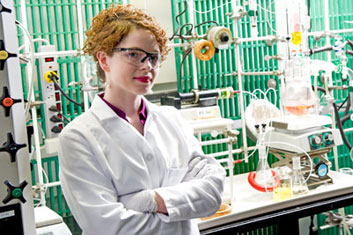
- Home
- Chemistry Materials Topics
- Biology and Chemistry Materials
- Electro Chemistry Materials
- Engineering Chemistry Materials
- Food Chemistry Materials
- Nanoscale Chemistry Materials
- Physics and Chemistry Materials
- Quantum Mechanics Chemistry Materials
- Resonance Chemistry Articles
- Synthesis Chemistry Materials
Resonance Chemistry Articles
Resonance simply means the alignment of the vibration of one object with the vibration of another one, and vibration is created when objects are put into motion. Such a thing could simply be a closing door, a gentle wind or dripping waterand these vibrations is what make up the resonance chemistry. Certainly, you will go over the different concepts and terms that are in relation to resonance chemistry while you’re still in school, and one of the best ways to become familiar with the topic is by reading many resonance chemistry articles.
Factors that Cause Resonance Chemistry
- Molecular Vibration
The vibrations made repeatedly are what generate the resonance chemistry; this is because the molecules are continuously moving in in a balanced position. This state of equilibrium takes place in your surroundings even if it’s not readily visible. Resonance Chemistry articles explain that when molecules are moving at a high speed, their electromagnetic attraction to each other is not as strong, but when they move faster they turn from gas to liquid. Moreover, when the matter is solid it’s when it generates stronger vibrations.
- Oscillation
According to various resonance chemistry articles published by reputable American universities, oscillation can be defined as a form of vibration that comes into harmony with its surroundings. This vibration takes place in a timely dimension and a clear example is a swinging pendulum.
- Cycles and Frequency
Cycle is described as the maximum limit of displacement (considering the factor where an object has moved to its possible maximum position) and the returning of the object to its original position. The time when the object completes its movement from and to its position is called cycle and the number of cycles taken in a certain period called frequency. Frequency is then measured in Hertz named after Heinrich Rudolf Hertz.
- Amplitude and Energy
A cycle is identified by its amplitude. In an oscillation, the maximum displacement of its atoms is being considered in order to get its potential energy. In this way, kinetic energy and potential energy are identified basing on the stability of the object’s equilibrium.
Applications of Resonance Chemistry& Sound Waves
When becoming more and more familiar with resonance chemistry articles and journals, you will find more information about the application of resonance chemistry. For example, the illustration of an oscillator is a swing – when a child sits on a swing, it finds itself in a position of balanced equilibrium, and displacement will then take place when the child gets taken off the swing. The movement of the swing upwards to the other side is the kinetic energy, and the transfer of energy from the person pushing the swing is resonance.In regards to sound waves, resonance chemistry articles explain that a high pitch wave can definitely break or disturb a set of particles. Nowadays, it’s possible to generate extremely high-pitched sounds that can disturb matter, such as a glass, and when that happens, the glass may break because of the transferred energy and chemistry.
